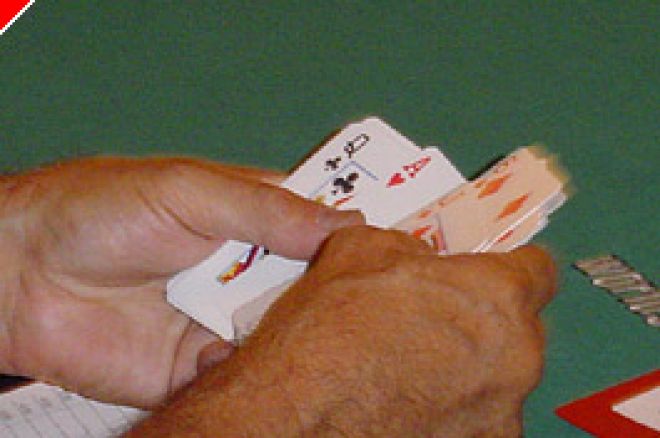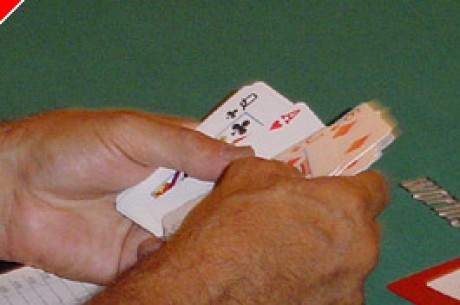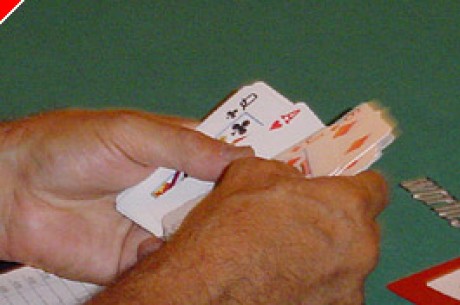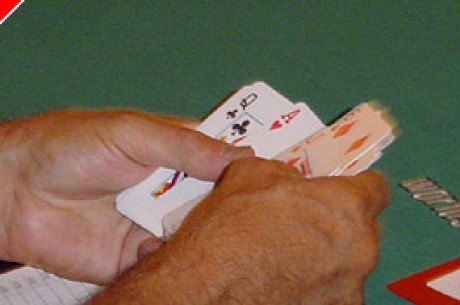Stud Poker Strategy - X-Ray Vision - Part I

I remember as a kid seeing ads in the back of comic books for x-ray glasses. You remember the ad, don't you? It was a picture of this guy wearing lightly shaded glasses and staring at a woman who clearly appeared to him to be naked. His tongue was hanging out and he was drooling. Just the sort of image to excite the imagination of an impressionable 12-year old.
I was too tight with my money back then to be seduced into sending off the requisite $1.95 for the specs. And, frankly, my grandfather (who taught me how to play poker) also taught me to be skeptical of ads. Still, my imagination was ignited. How cool would that be – to have real x-ray glasses? There were the obvious salacious possibilities – but there were also the more profitable ones that would arise at the poker table.
Of course, there are no such things as x-ray glasses that can unveil your opponents' down cards. (Though I suppose that there are cheating devices that almost do this with a combination of daub and color tinted lenses – but I digress). There are, however, card-reading skills that a good stud player can develop that can have a similar effect.
Let's look at a couple of examples of situations that often present themselves at the stud table. I'll present one in this column and then another in my next. In these examples you can find some of the tools that can help you figure out what your opponent has. In a way, it will be like donning x-ray glasses.
You have a split pair of Jacks with a 7 kicker. The bring in, to your immediate right, brings in the betting for the mandatory $5 in this $20/40 game. You're seen as a relatively tight player – certainly not wild. The players to your left have, in order, a King; a Queen; and a 9. There are a couple of lower denomination cards in between them. Your raise is called by first the King (a very loose, passive player) and then the 9 (a tight/aggressive player like yourself – but one you haven't played with very often). Everyone else, including the bring-in, folds to your raise. Three of you see fourth street.
The King gets a suited 4, the 9 gets an unsuited Ace, and you get a 6.
The Ace checks. You suspect that you're still high, so you bet with your pair of Jacks. The King, checking his downcard, calls. The Ace raises – a check-raise. You pause.
This is a good time for x-ray spectacles. Peer at the check-raiser's hole cards. What do you see? Can you make out the cards? I can.
He has an Ace in the hole. He's either hit two pair, if there's a 9 under there too, or a pair of Aces. You can't quite make out the other card but you're certain that one of his down cards is an Ace.
How do I know? Well, I don't really know. I don't really own x-ray glasses of course. But his actions have given his hand away. Think about it. What else is he likely to have?
Go back to third street. He's a tight player for the most part. Why would he call your raise – when a King also called? He'd need to have some shot of overtaking you on fourth. In all likelihood he'd want that Ace in the hole to draw to. And he just hit it on fourth street – hence the check raise.
Could he be putting a move on you, bluffing that he hit an Ace? Sure, it's possible. But it's highly unlikely – and poker is a game about probability not certainty. Against two opponents it's much less likely that he's bluffing than if he were playing you heads up. Heads up he might take a shot at the pot for such a move – figuring you might fold to his aggression. But with the third player in there – a loose one at that – it's an unlikely bluff. Is he really going to get two guys to fold for one bet after they've already each put a bet into the pot on fourth street? Again, possible but very unlikely.
Maybe you're still thinking about calling. So look at your other opponent's cards. Your x-ray glasses won't work as well against him. He's loose and passive – making his cards harder to read. Even so, he gave you a nice peek with his move after the deal on fourth street when he hit his second suited up card. Do you remember what he did?
He peeked. Why peek? Often this is a good indicator that a player is checking to see if one of his hole cards matches the suit of his two exposed suited cards. He'd remember if all three of his starting cards were the same suit. He'd be on a flush draw and he'd remember it. Similarly, if he had a pocket pair he'd be likely to remember that as well. So he'd be unlikely to be checking to see if he hit trips And since he didn't re-raise your hand on third street, it's unlikely that he started with a pair of Kings and was checking for two pair. He either has a couple of high cards and a 3-flush or, perhaps a pocket pair with a King kicker and a 3-flush.
So what are your odds of winning the hand if you draw to the river when you're holding a pair of Jacks with a 7 and 6 against one opponent with a 3-flush and a couple of overcards and another opponent with a pair of Aces? You're going to win, on average, less than a third of the time – about 29.5%. And if your loose opponent with the King started with a small pair in the hole and now has a 3-flush to go with it you're doing even worse – at about 24%. Those odds don't justify a call. Given what you've seen of your opponents' down cards your best move is probably to fold.
Your thinking is your substitute for the special comic book glasses. Try it on the next time you're playing. You might find the exercise very revealing








